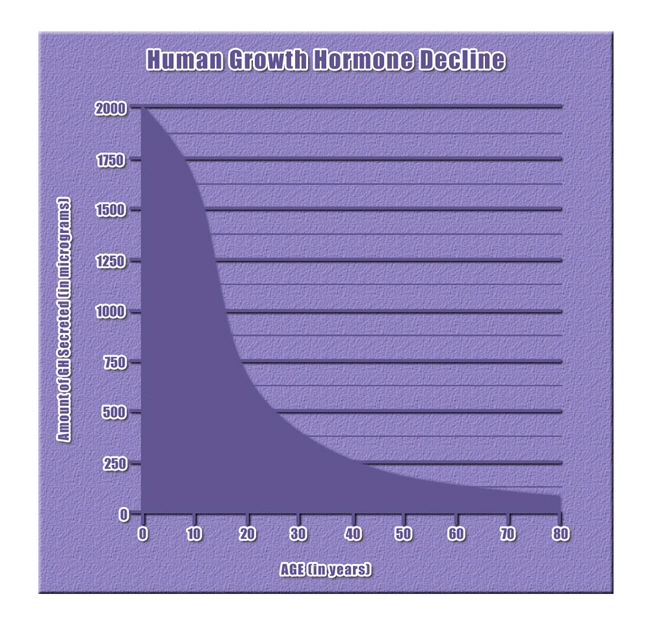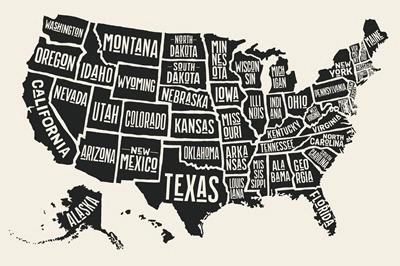
Idaho Blood Testing Facilities
 Represents a LabCorp blood testing facility
Represents a LabCorp blood testing facility Represents a Quest Diagnostics blood testing facility
Represents a Quest Diagnostics blood testing facility
LabCorp Blood Testing Centers In Ada County, Idaho
- Labcorp Center, 6086 W Emerald St, Boise, Ada County, ID, 83704
- Labcorp Center, 1965 S Eagle Road Suite 130, Meridian, Ada County, ID, 83642
LabCorp Blood Testing Centers In Bannock County, Idaho
- Labcorp Center, 444 Hospital Way Ste 401, Pocatello, Bannock County, ID, 83201
LabCorp Blood Testing Centers In Kootenai County, Idaho
- Labcorp Center, 750 Syringa Dr Ste 203C, Post Falls, Kootenai County, ID, 83854
Quest Blood Testing Centers In Bannock County, Idaho

Idaho
Visitidaho.org boasts that “There’s an adventure for you in Idaho”, and with more than 30 scenic byways, 60 wineries, 70 craft brewers, 130 Hot Springs, 3,000 miles of raft-friendly whitewater, and 30,000 miles of hiking and backpacking trails, Idaho has earned its nickname as “The Gem of the West.”
But the above-mentioned attractions do not tell the whole story. The majestic mountains that are home to several world-class ski resorts, canyons that beg to be explored, the blend of wildlife, especially birds of all types, the night sky, fishing, hunting, and the friendly folks who call Idaho home all combine to make “The Gem State” an attractive vacation destination. 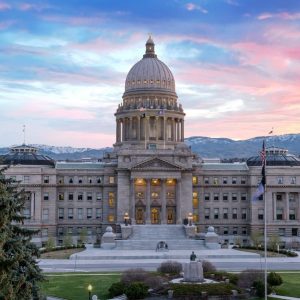
Let’s take a look at some of the many things to do in Idaho:
- The Idaho State Capital Building in Boise. Boise is the largest city in the state and home to several major air hubs which makes Boise a perfect starting point for touring Idaho. Protected by a towering 208-foot dome and covering 111,666 square feet, the Idaho State Capital Building stands out from the majestic Rocky Mountains. The 100-year old structure is an excellent example of the economic and political history of the state and is the heart of the executive and legislative arms of the state government, as well as many other state bureaucracies. Take your time to tour the building, revel in the charming interior, and don’t forget to stop at the gift shop
- Old Idaho Penitentiary State Historic Site. Frontier justice was swift and brutal, and if you would like to see an up-close reminder of that make sure to add Boise’s The Old Idaho Penitentiary to your travel itinerary. Opened in 1872 the prison nicknamed "Old Pen" was home to some of the wild west’s most dangerous and violent desperadoes. The prison closed in 1973 but is still open for tours. Many criminals met their end swinging from a rope, and feel free to stand in the gallows where it happened. The cell blocks remain in place and there are many exhibits to help you better understand what incarceration was like in that
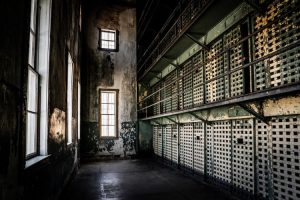 time and place. One warning: there are rumors that the place is haunted!
time and place. One warning: there are rumors that the place is haunted! - Boise River Greenbelt. Before leaving Boise don’t overlook The Boise River Greenbelt. Constructed in 1969, the Greenbelt is a meandering 25-mile path that only allows bikes and walking, so don’t be in a hurry. But you will have no reason to rush since these 850 acres contain an eclectic mixture of parks, the Boise River, golf courses, fishing (Largemouth Bass, Brown Trout, Mountain Whitefish and rainbow trout), bird watching (ducks, songbirds, and Bald Eagles), and the campus of Boise State University.
- City of Rocks National Reserve. The popularity of rock climbing has exploded in recent years, and that has resulted in hordes of climbers discovering the City of Rocks National Reserve. Rock climbers of many styles come to the reserve from all across the nation and internationally as well. But climbers are not the only outdoor enthusiasts drawn to the City of Rocks. Bird watchers, campers, photographers, mountain bikers, and hikers all find their way to the adventure and outdoor enjoyment of the City of Rocks
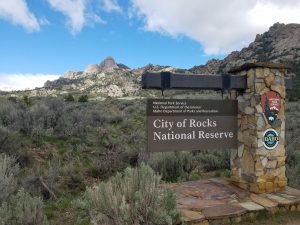 Reserve. And the 2.5 billion-year-old rocks perk the interest of geology buffs.
Reserve. And the 2.5 billion-year-old rocks perk the interest of geology buffs. - Sun Valley Resort. If you love skiing, Sun Valley is an absolute must-stop. There are two mountains at the resort: Bald Mountain and Dollar Mountain. Between the two of them, there is something here for all skiers, both beginners and experienced pros. Beginners would be well-served to start on Dollar Mountain since the slopes are not as steep as the slopes on Bald Mountain. But there is more here than skiing. Check out the Nordic Center and try your hand (and feet) at snowshoeing or cross-country skiing. When warmer weather appears the focus shifts to activities like hiking, running the hills, mountain biking, fishing, rafting, hang gliding, or doing a relaxing yoga session on top of the mountain. With many exquisite restaurants, several art galleries, theater companies, and summer symphony concerts, the evenings can be as alluring and captivating as the resort’s daytime adventures. Finally, one of America’s most prolific authors, Ernest Hemingway, loved Sun Valley and returned here time and time again to write, fish, hunt, and enjoy a few drinks at the Sawtooth Club and the Pioneer Saloon. Hemingway was buried in Sun Valley and his gravesite attracts fans from all over the world.
- Idaho’s Hot Springs. It is a commonly accepted medical fact: Stress kills! Many medical professionals believe that controlling stress is the number one thing you can do to protect your health and well-being. How better to do that than to immerse yourself in one of mother nature’s most precious gifts: a mineral-
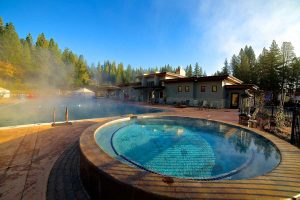 loaded hot spring. The good news? Idaho has 130 of them to choose from, and most of them are conveniently located not too far from the highway. A vacation is intended to be relaxing, and soaking in a hot spring is right at the top of the list for a soothing way to unwind.
loaded hot spring. The good news? Idaho has 130 of them to choose from, and most of them are conveniently located not too far from the highway. A vacation is intended to be relaxing, and soaking in a hot spring is right at the top of the list for a soothing way to unwind. - The Central Idaho Dark Sky Reserve. If you are a star-gazer and are fascinated by the celestial cinema in the sky, and you live in an area that is urban and well-lit, you have probably been frustrated by the challenges of observing the dance of the planets, moons, and stars. But there are no such problems at The Central Dark Sky Reserve where the night sky is usually dark and the sky comes alive even through the naked eye. Binoculars and telescopes can allow you to delve deep into the cosmos and take the knowledge that you may have learned through astronomy books and videos and see it live for yourself. Conveniently located in Central Idaho, the reserve is within driving distance from any part of the state.
- Hell's Canyon National Recreation Area. Deep canyons and river gorges anyone? If these marvels of geology fascinate you, Hell's Canyon is the place you need to see and bring your camera. This canyon is home to the North American Continent's deepest river gorge and offers live lessons in the incredible, awesome, inexorable power of geology. The stones in the canyon were made by underwater volcanoes more than 150 million years ago that attached themselves to North America by the movement of tectonic plates. Slow but sure movement and activity in the earth resulted in what you see today.
- Lake Coeur d'Alene. Here is yet another Idaho geological masterpiece going back to the last ice age that resulted in glacial deposits forming and giving birth to this aesthetically pleasing natural jewel. Rent a boat, drop a fishing line, or just relax in the scenic, tranquil surroundings of the forests and the
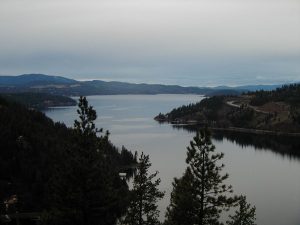 mountains that encircle the sparkling blue waters of the lake.
mountains that encircle the sparkling blue waters of the lake. - Craters of the Moon National Monument. Located near Arco in the southeastern part of the state, the Craters of the Moon National Monument is unlike anything you have ever seen or anywhere you have ever been. The website of the monument describes the location as “A violent past, calm present, and an uncertain future” and invites you to “explore this “weird and scenic landscape.” Visitors have described it as like going back in time and feeling like you are on the moon. Pictures alone cannot capture the strange magnetism of Craters of the Moon National Park...it must be seen in person to be fully appreciated.
- The Morley Nelson Snake River Birds of Prey National Conservation Area. Eager to see Osprey in their natural habitat? Owls? Bald Eagles? Falcons? If you are take note that springtime draws several hundred pis of the predatory birds to mate and raise their offspring. See it all on the Idaho Birding Trail.
To fully enjoy the attractions of Idaho, you need your youthful vigor.
And that’s where we can help. If you live in Idaho and are experiencing a decline in your hormone balance, our Licensed Hormone Specialists can help. We work with both men and women 30 and older, providing prescription testosterone replacement therapy, sermorelin therapy, and human growth hormone  treatment to patients that can benefit from these potent, energy-boosting treatments.
treatment to patients that can benefit from these potent, energy-boosting treatments.
All three of these hormone replacement therapies have proven to be a valuable tool in the battle against age-related hormone decline, and thousands of patients across Idaho have experienced the benefits of our treatments.
We work with local doctors all across Idaho, and this allows us to deliver our expertise directly to our patients.
Contact us for a free, no-obligation discussion and discover what hormone replacement can do for you!
Idaho
This article is about the U.S. state of Idaho. For other uses, see Idaho (disambiguation).
Idaho (/?a?d?ho?/ ( listen)) is a state in the northwestern region of the United States. It borders the state of Montana to the east and northeast, Wyoming to the east, Nevada and Utah to the south, and Washington and Oregon to the west. To the north, it shares a small portion of the Canadian border with the province of British Columbia. With a population of around 1.6 million and an area of 83,569 square miles (216,440 km2), Idaho is the 14th largest, the 12th least populous and the 7th least densely populated of the 50 U.S. states. The state's capital and largest city is Boise.
Idaho prior to European settlement was inhabited by Native American peoples, some of which still live in the area. In the early 19th century, Idaho was considered part of the Oregon Country, an area disputed between the U.S. and the United Kingdom. It officially became U.S. territory with the signing of the Oregon Treaty of 1846, but a separate Idaho Territory was not organized until 1863, instead being included for periods in Oregon Territory and Washington Territory. Idaho was eventually admitted to the Union on July 3, 1890, becoming the 43rd state.
Forming part of the Pacific Northwest (and the associated Cascadia bioregion), Idaho is divided into several distinct geographic and climatic regions. In the state's north, the relatively isolated Idaho Panhandle is closely linked with Eastern Washington, with which it shares the Pacific Time Zone – the rest of the state uses the Mountain Time Zone. The state's south includes the Snake River Plain (which contains most of the population and agricultural land), while the south-east incorporates part of the Great Basin. Idaho is quite mountainous, and contains several stretches of the Rocky Mountains. Additionally, around 38 per cent of Idaho's land is held by the United States Forest Service, the most of any state.
Industries significant for the state economy include manufacturing, agriculture, mining, forestry, and tourism. A number of science and technology firms are either headquartered in Idaho or have factories there, and the state also contains the Idaho National Laboratory, which is the largest Department of Energy facility in the country. Idaho's agricultural sector supplies a number of different products, but the state is best known for its potato crop, which comprises around one-third of the nationwide yield. The official state nickname is the "Gem State", which references Idaho's reputation for gemstones and, more broadly, its many wilderness areas.
Contents
- 1 Etymology
- 2 Geography
- 2.1 Climate
- 2.2 Lakes/rivers
- 3 History
- 4 Demographics
- 4.1 Birth data
- 4.2 Religion
- 4.3 Language
- 5 Economy
- 6 Energy
- 7 Transportation
- 7.1 Highways
- 7.2 Airports
- 7.3 Railroads
- 7.4 Ports
- 8 Law and government
- 8.1 State constitution
- 8.2 Idaho Code and Statutes
- 8.3 State government
- 8.3.1 Executive branch
- 8.3.2 Legislative branch
- 8.3.3 Judicial branch
- 8.3.4 Counties
- 8.3.5 Politics
- 9 Cities and towns
- 10 Protected areas
- 10.1 National parks, reserves, monuments and historic sites
- 10.2 National recreation areas
- 10.3 National wildlife refuges and Wilderness Areas
- 10.4 National conservation areas
- 10.5 State parks
- 11 Education
- 11.1 Colleges and universities
- 12 Sports
- 13 Official state emblems
- 14 In popular culture
- 15 See also
- 16 References
- 17 External links
Etymology
The exact origin of the name remains a mystery. In the early 1860s, when the United States Congress was considering organizing a new territory in the Rocky Mountains, eccentric lobbyist George M. Willing suggested the name "Idaho", which he claimed was derived from a Shoshone language term meaning "the sun comes from the mountains" or "gem of the mountains". Willing later claimed he had simply invented the name. Congress ultimately decided to name the area Colorado Territory when it was created in February 1861. Thinking they would get a jump on the name, locals named a community in Colorado "Idaho Springs".
However, the name "Idaho" did not fall into obscurity. The same year Congress created Colorado Territory, a county called Idaho County was created in eastern Washington Territory. The county was named after a steamship named Idaho, which was launched on the Columbia River in 1860. It is unclear whether the steamship was named before or after Willing's claim was revealed. Regardless, a portion of Washington Territory, including Idaho County, was used to create Idaho Territory in 1863.
Despite this lack of evidence for the origin of the name, many textbooks well into the 20th century repeated as fact Willing's account the name "Idaho" derived from the Shoshone term "ee-da-how". A 1956 Idaho history textbook says:
"Idaho" is a Shoshoni Indian exclamation. The word consists of three parts. The first is "Ee", which in English conveys the idea of "coming down". The second is "dah" which is the Shoshoni stem or root for both "sun" and "mountain". The third syllable, "how", denotes the exclamation and stands for the same thing in Shoshoni that the exclamation mark (!) does in the English language. The Shoshoni word is "Ee-dah-how", and the Indian thought thus conveyed when translated into English means, "Behold! the sun coming down the mountain.
An alternative etymology attributes the name to the Plains Apache word "ídaah??" (enemy) that was used in reference to The Comanche.
Geography
Idaho borders six US states and one Canadian province. The states of Washington and Oregon are to the west, Nevada and Utah are to the south, and Montana and Wyoming are to the east. Idaho also shares a short border with the Canadian province of British Columbia to the north.
The landscape is rugged with some of the largest unspoiled natural areas in the United States. For example, at 2.3 million acres (930,000 ha), the Frank Church-River of No Return Wilderness Area is the largest contiguous area of protected wilderness in the continental United States. Idaho is a Rocky Mountain state with abundant natural resources and scenic areas. The state has snow-capped mountain ranges, rapids, vast lakes and steep canyons. The waters of the Snake River rush through Hells Canyon, the deepest gorge in the United States. Shoshone Falls plunges down rugged cliffs from a height greater than Niagara Falls.
The major rivers in Idaho are the Snake River, the Clark Fork/Pend Oreille River, the Clearwater River, and the Salmon River. Other significant rivers include the Coeur d'Alene River, the Spokane River, the Boise River, and the Payette River. The Salmon River empties into the Snake in Hells Canyon and forms the southern boundary of Nez Perce County on its north shore, of which Lewiston is the county seat. The Port of Lewiston, at the confluence of the Clearwater and the Snake Rivers is the farthest inland seaport on the West Coast at 465 river miles from the Pacific at Astoria, Oregon.
Idaho's highest point is Borah Peak, 12,662 ft (3,859 m), in the Lost River Range north of Mackay. Idaho's lowest point, 710 ft (216 m), is in Lewiston, where the Clearwater River joins the Snake River and continues into Washington. The Sawtooth Range is often considered Idaho's most famous mountain range. Other mountain ranges in Idaho include the Bitterroot Range, the White Cloud Mountains, the Lost River Range, the Clearwater Mountains, and the Salmon River Mountains.
Idaho has two time zones, with the dividing line approximately midway between Canada and Nevada. Southern Idaho, including the Boise metropolitan area, Idaho Falls, Pocatello, and Twin Falls, are in the Mountain Time Zone. A legislative error (15 U.S.C. ch. 6 §264) theoretically placed this region in the Central Time Zone, but this was corrected with a 2007 amendment. Areas north of the Salmon River, including Coeur d'Alene, Moscow, Lewiston, and Sandpoint, are in the Pacific Time Zone, which contains less than a quarter of the state's population and land area.
Climate
Idaho's climate varies widely. Although the state's western border is about 350 miles (560 km) from the Pacific Ocean, the maritime influence is still felt in Idaho, especially in the winter when cloud cover, humidity, and precipitation are at their maximum extent. This influence has a moderating effect in the winter where temperatures are not as low as would otherwise be expected for a northern state with predominantly high elevations. The maritime influence is least prominent in the state's eastern part where the precipitation patterns are often reversed, with wetter summers and drier winters, and seasonal temperature differences are more extreme, showing a more semi-arid continental climate.
Idaho can be hot, although extended periods over 98 °F (37 °C) for the maximum temperature are rare, except for the lowest point in elevation, Lewiston, which correspondingly sees little snow. Hot summer days are tempered by the low relative humidity and cooler evenings during summer months since, for most of the state, the highest diurnal difference in temperature is often in the summer. Winters can be cold, although extended periods of bitter cold weather below zero are unusual. Idaho's all-time highest temperature of 118 °F (48 °C) was recorded at Orofino on July 28, 1934; the all-time lowest temperature of ?60 °F (?51 °C) was recorded at Island Park Dam on January 18, 1943.
Lakes/rivers
- Alturas Lake
- Brush Lake
- Bear River
- Bear Lake (Idaho-Utah)
- Boise River
- Clearwater River
- Dawson Lake
- Dierkes Lake
- Hayden Lake
- Henry's Lake
- Hidden Lake
- Kootenai River
- Lake Cascade
- Lake Cleveland
- Lake Coeur d'Alene
- Lake Lowell
- Lake Walcott
- Pend Oreille
- Little Redfish Lake
- Lucky Peak Lake
- Moyie River
- North Fork Clearwater River
- Pack River
- Payette Lake, (McCall)
- Pettit Lake
- Priest Lake
- Perkins Lake
- Portneuf River
- Redfish Lake
- River of No Return
- Sawtooth Lake
- Smith Lake
- Snake River
- Stanley Lake
- Warm Lake
- Williams Lake (Salmon)
History
: History of Idaho
Humans may have been present in the Idaho area as long as 14,500 years ago. Excavations at Wilson Butte Cave near Twin Falls in 1959 revealed evidence of human activity, including arrowheads, that rank among the oldest dated artifacts in North America. American Indian peoples predominant in the area included the Nez Percé in the north and the Northern and Western Shoshone in the south.
An early presence of French-Canadian trappers is visible in names and toponyms: Nez Percé, Cœur d'Alène, Boisé, Payette, some preexisting the Lewis and Clark and Astorian expeditions which themselves included significant numbers of French and Métis guides recruited for their familiarity with the terrain.
Idaho, as part of the Oregon Country, was claimed by both the United States and Great Britain until the United States gained undisputed jurisdiction in 1846. From 1843 to 1849, present-day Idaho was under the de facto jurisdiction of the Provisional Government of Oregon. When Oregon became a state, what is now Idaho was in what remained of the original Oregon Territory not part of the new state, and designated as the Washington Territory.
Between then and the creation of the Idaho Territory on March 4, 1863, at Lewiston, parts of the present-day state were included in the Oregon, Washington, and Dakota Territories. The new territory included present-day Idaho, Montana, and most of Wyoming. The Lewis and Clark expedition crossed Idaho in 1805 on the way to the Pacific and in 1806 on the return, largely following the Clearwater River both directions. The first non-indigenous settlement was Kullyspell House, established on the shore of Lake Pend Oreille for fur trading in 1809 by David Thompson of the North West Company. In 1812 Donald Mackenzie, working for the Pacific Fur Company at the time, established a post on the lower Clearwater River near present-day Lewiston. This post, known as "MacKenzie's Post" or "Clearwater", operated until the Pacific Fur Company was bought out by the North West Company in 1813, after which it was abandoned. The first attempts at organized communities, within the present borders of Idaho, were established in 1860. The first permanent, substantial incorporated community was Lewiston in 1861.
After some tribulation as a territory, including the chaotic transfer of the territorial capital from Lewiston to Boise,disenfranchisement of Mormon polygamists upheld by the U.S. Supreme Court in 1877, and a federal attempt to split the territory between Washington Territory which gained statehood in 1889, a year before Idaho, and the state of Nevada which had been a state since 1864, Idaho achieved statehood in 1890.
Idaho was one of the hardest hit of the Pacific Northwest states during the Great Depression. Prices plummeted for Idaho's major crops: in 1932 a bushel of potatoes brought only $.10 compared to $1.51 in 1919, while Idaho farmers saw their annual income of $686 in 1929 drop to $250 by 1932.
In recent years, Idaho has expanded its commercial base as a tourism and agricultural state to include science and technology industries. Science and technology have become the largest single economic center (over 25% of the state's total revenue) within the state and are greater than agriculture, forestry and mining combined.
Demographics
The United States Census Bureau estimates Idaho's population was 1,654,930 on July 1, 2015, a 5.57% increase since 2010.
At the 2010 Census,
- 89.1% of the population was White American
- 0.6% Black or African American
- 1.4% American Indian and Alaska Native
- 1.2% Asian American
- 0.1% Native Hawaiian and Other Pacific Islander
- 2.5% of two or more races.
11.2% of Idaho's population was of Hispanic or Latino (they may be of any race). As of 2011, 27.2% of Idaho's children under the age of one belonged to racial or ethnic minority groups, meaning they had at least one parent who was not non-Hispanic white.
Idaho had an estimated population of 1,654,930 in 2015, which was an increase of 20,466, from the prior year and an increase of 87,348, or 5.57%, since 2010. This includes a natural increase since the last census of 58,884 people (that is, 111,131 births minus 52,247 deaths) and an increase due to net migration of 75,795 people into the state. There are large numbers of Americans of English and German ancestry in Idaho. Immigration from outside the United States resulted in a net increase of 14,522 people, and migration within the country produced a net increase of 61,273 people.
This made Idaho the sixth fastest-growing state after Arizona, Nevada, Florida, Georgia, and Utah. From 2004 to 2005, Idaho grew the third-fastest, surpassed only by Nevada and Arizona.
Nampa, about 20 miles (30 km) west of downtown Boise, became the state's second largest city in the late 1990s, passing Pocatello and Idaho Falls. Nampa's population was under 29,000 in 1990 and grew to over 81,000 by 2010. Located between Nampa and Boise, Meridian also experienced high growth, from under 10,000 residents in 1990 to over 75,000 in 2010 and is now Idaho's third largest city. Growth of 5% or more over the same period has also been observed in Caldwell, Coeur d'Alene, Post Falls, and Twin Falls.
From 1990 to 2010, Idaho's population increased by over 560,000 (55%).
The Boise Metropolitan Area (officially known as the Boise City-Nampa, ID Metropolitan Statistical Area) is Idaho's largest metropolitan area. Other metropolitan areas in order of size are Coeur d'Alene, Idaho Falls, Pocatello and Lewiston.
As of 2006, six official micropolitan statistical areas are based in Idaho. Twin Falls is the largest of these.
The most common reported ancestries in the state are: German (18.9%), English (18.1%), Irish (10%), American (8.4%), Norwegian (3.6%), and Italian (3.5%).
Birth data
Note: Births in table don't add up, because Hispanics are counted both by their ethnicity and by their race, giving a higher overall number.
Religion
According to the Pew Research Center on Religion & Public Life, the self-identified religious affiliations of Idahoans over the age of 18 in 2008 and 2014 were:
According to the Association of Religion Data Archives, the largest denominations by number of members in 2010 were The Church of Jesus Christ of Latter-day Saints with 409,265; the Catholic Church with 123,400; the non-denominational Evangelical Protestant with 62,637; and the Assemblies of God with 22,183.
Language
English is the state's predominant language. Minority languages include Spanish and various Native American languages.
Economy
See also: Idaho locations by per capita income
Gross state product for 2015 was $64.9 billion, and the per capita income based on 2015 GDP and 2015 population estimates was $39,100.
Idaho is an important agricultural state, producing nearly one-third of the potatoes grown in the United States. All three varieties of wheat, dark northern spring, hard red, and soft white are grown in the state. Nez Perce County is considered a premier soft white growing locale.
Important industries in Idaho are food processing, lumber and wood products, machinery, chemical products, paper products, electronics manufacturing, silver and other mining, and tourism. The world's largest factory for barrel cheese, the raw product for processed cheese is in Gooding, Idaho. It has a capacity of 120,000 metric tons per year of barrel cheese and belongs to the Glanbia group. The Idaho National Laboratory (INL) is the largest Department of Energy facility in the country by area. INL is an important part of the eastern Idaho economy. Idaho also is home to three facilities of Anheuser-Busch which provide a large part of the malt for breweries across the nation.
Locally, a variety of industries are important. Outdoor recreation is a common example ranging from numerous snowmobile and downhill and cross-country ski areas in winter to the evolution of Lewiston as a retirement community based on mild winters, dry, year-round climate and one of the lowest median wind velocities anywhere, combined with the rivers for a wide variety of activities. Other examples would be ATK Corporation, which operates three ammunition and ammunition components plants in Lewiston. Two are sporting and one is defense contract. The Lewis-Clark valley has an additional independent ammunition components manufacturer and the Chipmunk rifle factory until it was purchased in 2007 by Keystone Sporting Arms and production was moved to Milton, Pennsylvania. Four of the world's six welded aluminum jet boat (for running river rapids) manufacturers are in the Lewiston-Clarkston, WAvalley. Wine grapes were grown between Kendrick and Juliaetta in the Idaho Panhandle by the French Rothschilds until Prohibition. In keeping with this, while there are no large wineries or breweries in Idaho, there are numerous and growing numbers of award-winning boutique wineries and microbreweries in the northern part of the state.
Today, Idaho's largest industry is the science and technology sector. It accounts for over 25% of the state's revenue and over 70% of the state's exports. Idaho's industrial economy is growing, with high-tech products leading the way. Since the late 1970s, Boise has emerged as a center for semiconductor manufacturing. Boise is the home of Micron Technology, the only U.S. manufacturer of dynamic random-access memory (DRAM) chips. Micron at one time manufactured desktop computers, but with very limited success. Hewlett-Packard has operated a large plant in Boise since the 1970s, which is devoted primarily to LaserJet printers production. Boise-based Clearwater Analytics is another rapidly growing investment accounting and reporting software firm, reporting on over $1 trillion in assets.ON Semiconductor, whose worldwide headquarters in Pocatello, is a widely recognized innovator in modern integrated mixed-signal semiconductor products, mixed-signal foundry services, and structured digital products. Coldwater Creek, a women's clothing retailer, is headquartered in Sandpoint. Sun Microsystems (now a part of Oracle Corporation) has two offices in Boise and a parts depot in Pocatello. Sun brings $4 million in annual salaries and over $300 million of revenue to the state each year.
A number of Fortune 500 companies started in or trace their roots to Idaho, including Safeway in American Falls, Albertsons in Boise, JR Simplot across southern Idaho, and Potlatch Corp. in Lewiston. Zimmerly Air Transport in Lewiston-Clarkston was one of the five companies in the merger centered around Varney Air Lines of Pasco, Washington, which became United Airlines and subsequently Varney Air Group that became Continental Airlines.
The state personal income tax ranges from 1.6% to 7.8% in eight income brackets. Idahoans may apply for state tax credits for taxes paid to other states, as well as for donations to Idaho state educational entities and some nonprofit youth and rehabilitation facilities.
The state sales tax is 6% with a very limited, selective local option up to 6.5%. Sales tax applies to the sale, rental or lease of tangible personal property and some services. Food is taxed, but prescription drugs are not. Hotel, motel, and campground accommodations are taxed at a higher rate (7% to 11%). Some jurisdictions impose local option sales tax.
The sales tax was introduced at 3% in 1965, easily approved by voters, where it remained until 1983.
In 2014, Idaho emerged as the second most small business friendly state, ranking behind Utah, based on a study drawing upon data from over 12,000 small business owners.
Idaho has a state gambling lottery which contributed $333.5 million in payments to all Idaho public schools and Idaho higher education from 1990 to 2006.
Energy
Idaho's energy landscape is favorable to the development of renewable energy systems. The state is rich in renewable energy resources but has limited fossil fuel resources. The Snake River Plain and smaller river basins provide Idaho with some of the nation's best hydroelectric power resources and its geologically active mountain areas have significant geothermal power and wind power potential. These realities have shaped much of the state's energy landscape.
Most of the energy consumed in Idaho is imported from other states. Imports account for more than 80% of total energy consumption, including all of Idaho's natural gas and petroleum supplies and more than half of its electricity. Of the electricity consumed in Idaho in 2005, 48% came from hydroelectricity, 42% was generated by burning coal and 9% was generated by burning natural gas. The remainder came from other renewable sources such as wind.
The state's numerous river basins allow hydroelectric power plants to provide 556,000 MWh, which amounts to about three-fourths of Idaho's electricity generated in the state. Washington State provides most of the natural gas used in Idaho through one of the two major pipeline systems supplying the state. Although the state relies on out-of-state sources for its entire natural gas supply, it uses natural gas-fired plants to generate 127,000 MWh, or about ten per cent of its output. Coal-fired generation and the state's small array of wind turbines supplies the remainder of the state's electricity output. The state produces 739,000 MWh but still needs to import half of its electricity from out-of-state to meet demand.
While Idaho's 515 trillion BTU total energy consumption is low compared with other states and represents just 0.5% of United States consumption, the state also has the nation's 11th smallest population, 1.5 million, so its per capita energy consumption of 352 million Btu is just above the national average of 333 million Btu. As the 13th?largest state in terms of land area (83,570 sq. mi=53,485,000ac), distance creates the additional problem of "line loss". When the length of an electrical transmission line is doubled, the resistance to an electric current passing through it is also doubled.
In addition, Idaho also has the 6th fastest growing population in the United States with the population expected to increase by 31% from 2008 to 2030. This projected increase in population will contribute to a 42% increase in demand by 2030, further straining Idaho's finite hydroelectric resources.
Idaho has an upper-boundary estimate of development potential to generate 44,320 GWh/year from 18,076 MW of wind power, and 7,467,000 GWh/year from solar power using 2,061,000 MW of photovoltaics (PV), including 3,224 MW of rooftop photovoltaics, and 1,267,000 MW of concentrated solar power.
Transportation
The Idaho Transportation Department is the government agency responsible for Idaho's transportation infrastructure, including operations and maintenance as well as planning for future needs. The agency is also responsible for overseeing the disbursement of federal, state, and grant funding for the transportation programs of the state.
Highways
: List of state highways in Idaho
Idaho is among the few states in the nation without a major freeway linking its two largest metropolitan areas, Boise in the south and Coeur d'Alene in the north. US-95 links the two ends of the state, but like many other highways in Idaho, it is badly in need of repair and upgrade. In 2007, the Idaho Transportation Department stated the state's highway infrastructure faces a $200 million per year shortfall in maintenance and upgrades. I-84 is the main highway linking the southeast and southwest portions of the state, a long with I-86 and I-15. Major federal aid highways in Idaho:
Airports
Major airports include the Boise International Airport serving the southwest region of Idaho, and the Spokane International Airport (in Spokane, Washington), which serves northern Idaho. Other airports with scheduled service are the Pullman-Moscow Regional Airport serving the Palouse; the Lewiston-Nez Perce County Airport, serving the Lewis-Clark Valley and north central and west central Idaho; The Magic Valley Regional Airport in Twin Falls; the Idaho Falls Regional Airport; and the Pocatello Regional Airport.
Railroads
Idaho is served by three transcontinental railroads. The Burlington Northern Santa Fe (BNSF) connects the Idaho Panhandle with Seattle, Portland, and Spokane to the west, and Minneapolis and Chicago to the east. The BNSF travels through Kootenai, Bonner, and Boundary counties. The Union Pacific Railroad crosses North Idaho entering from Canada through Boundary and Bonner, and proceeding to Spokane. Canadian Pacific Railway uses Union Pacific Railroad tracks in North Idaho carrying products from Alberta to Spokane and Portland, Oregon. Amtrak's Empire Builder crosses northern Idaho, with its only stop being in Sandpoint. Montana Rail Link also operates between Billings, Montana and Sandpoint, Idaho
The Union Pacific Railroad also crosses southern Idaho traveling between Portland, Oregon, Green River, Wyoming, and Ogden, Utah and serves Boise, Nampa, Twin Falls, and Pocatello.
Ports
The Port of Lewiston is the farthest inland Pacific port on the west coast. A series of dams and locks on the Snake River and Columbia River facilitate barge travel from Lewiston to Portland, where goods are loaded on ocean-going vessels.
Law and government
State constitution
The constitution of Idaho is roughly modeled on the national constitution with several additions. The constitution defines the form and functions of the state government, and may be amended through plebiscite. Notably, the state constitution presently requires the state government to maintain a balanced budget. As result, Idaho has limited debt (construction bonds, etc.).
Idaho Code and Statutes
All of Idaho's state laws are contained in the Idaho Code and Statutes. The code is amended through the legislature with the approval of the governor. Idaho still operates under its original (1889) state constitution.
State government
The constitution of Idaho provides for three branches of government: the executive, legislative and judicial branches. Idaho has a bicameral legislature, elected from 35 legislative districts, each represented by one senator and two representatives.
Since 1946, statewide elected constitutional officers have been elected to four-year terms. They include: Governor, Lieutenant Governor, Secretary of State, Idaho state controller (Auditor before 1994), Treasurer, Attorney General, and Superintendent of Public Instruction.
Last contested in 1966, Inspector of Mines was an original elected constitutional office. Afterward it was an appointed position and ultimately done away with entirely in 1974.
Idaho's government has an alcohol monopoly.
Executive branch
Further information: List of Governors of IdahoFurther information: Lieutenant Governor of IdahoFurther information: Secretary of State of Idaho
The governor of Idaho serves a four-year term, and is elected during what is nationally referred to as midterm elections. As such, the governor is not elected in the same election year as the president of the United States. The current governor is Republican CL "Butch" Otter, who was elected in 2006, and re-elected in 2010 and 2014.
Legislative branch
: Idaho Legislature
Idaho's legislature is part-time. However, the session may be extended if necessary, and often is. Because of this, Idaho's legislators are considered "citizen legislators", meaning their position as a legislator is not their main occupation.
Terms for both the Senate and House of Representatives are two years. Legislative elections occur every even numbered year.
The Idaho Legislature has been continuously controlled by the Republican Party since the late 1950s, although Democratic legislators are routinely elected from Boise, Pocatello, Blaine County and the northern Panhandle.
See also List of Idaho senators and representatives
Judicial branch
: Courts of Idaho
The highest court in Idaho is the Idaho Supreme Court. There is also an intermediate appellate court, the Idaho Court of Appeals, which hears cases assigned to it from the Supreme Court. The state's District Courts serve seven judicial districts.
Counties
: List of counties in Idaho
Idaho is divided into political jurisdictions designated as counties. Since 1919 there are 44 counties in the state, ranging in size from 410 to 8,502 square miles (1,060 to 22,020 km2).
Total Counties: 44. Total 2008 Population Est.: 1 523 816. Total Area: 87,530 square miles (226,700 km2).
Three counties were first designated as such by the Washington Territorial Legislature in 1861; they were subsequently redesignated as Idaho counties in 1864. The 1861 Nez Percé county has since been broken up into Nez Percé, Lewis, Boundary, Benewah, Latah, Kootenai, and Clearwater counties.
Idaho license plates begin with a county designation based on the first letter of the county's name. Where a letter is at the beginning of more than one name, a number accompanies precedingly in alphabetical order. This reflects an anomalous coincidental situation wherein 10 counties begin with B, seven with C and four with L, which is 21 of the 44 counties.
Politics
After the Civil War, many Midwestern and Southern Democrats moved to the Idaho Territory. As a result, the early territorial legislatures were solidly Democrat-controlled. In contrast, most of the territorial governors were appointed by Republican presidents and were Republicans themselves. This led to sometimes-bitter clashes between the two parties, including a range war with the Democrats backing the sheepherders and the Republicans the cattlemen. That ended with the "Diamondfield" Jack Davis murder trial. In the 1880s, Republicans became more prominent in local politics.
In 1864, Clinton DeWitt Smith removed the territorial seal and the state constitution from a locked safe, and took them to Boise. This effectively moved the capital from where they were stored (Lewiston, Idaho) to the current capital Boise, Idaho.
Since statehood, the Republican Party has usually been the dominant party in Idaho. At one time, Idaho had two Democratic parties, one being the mainstream and the other called the Anti-Mormon Democrats, lasting into the early 20th century. In the 1890s and early 1900s, the Populist Party enjoyed prominence while the Democratic Party maintained a brief dominance in the 1930s during the Great Depression. Since World War II, most statewide elected officials have been Republicans. The last time the Democratic Party held a majority in either house of the state legislature was the House of Representatives in 1958 by one seat. However, Democrats did hold the governorship from 1971 to 1995, despite the state's Republican tilt.
Idaho Congressional delegations have also been generally Republican since statehood. Several Idaho Democrats have had electoral success in the House over the years, but the Senate delegation has been a Republican stronghold for decades. Several Idaho Republicans, including current Senator Mike Crapo, have won reelection to the Senate, but only Frank Church has won reelection as a Democrat. Church was the last Idaho Democrat to win a U.S. Senate race, in 1974. Walt Minnick's 2008 win in the First Congressional District was the state's first Democratic Congressional victory in 16 years.
In modern times, Idaho has been a reliably Republican state in presidential politics as well. It has not supported a Democrat for president since 1964. Even in that election, Lyndon Johnson defeated Barry Goldwater in the state by fewer than two percentage points, compared to a landslide nationally. In 2004, Republican George W. Bush carried Idaho by a margin of 38 percentage points and with 68.4% of the vote, winning in 43 of 44 counties. Only Blaine County, which contains the Sun Valley ski resort, supported John Kerry, who owns a home in the area. In 2008 Barack Obama's 36.1 percent showing was the best for a Democratic presidential candidate in Idaho since 1976. However, Republican margins were narrower in 1992 and 1976.
In the 2006 elections, Republicans, led by gubernatorial candidate CL "Butch" Otter, won all the state's constitutional offices and retained both of the state's seats in the United States House of Representatives. However, Democrats picked up several seats in the Idaho Legislature, notably in the Boise area.
Republicans lost one of the House seats in 2008 to Minnick, but Republican Jim Risch retained Larry Craig's Senate seat for the GOP by a comfortable margin. Minnick lost his seat in the 2010 election to Republican State Rep. Raul Labrador.
Further information: Political party strength in Idaho
Cities and towns
See also: List of cities in Idaho
Population > 100,000 (urbanized area)
- Boise – state capital
Population > 50,000 (urbanized area)
- Idaho Falls – location of the main offices of the Idaho National Laboratory
- Nampa – home of Northwest Nazarene University
- Pocatello – home of Idaho State University
- Meridian – suburb of Boise, fastest growing city in Idaho
Population > 30,000 (urbanized area)
- Caldwell – home of the College of Idaho
- Coeur d'Alene – home of North Idaho College, major tourist hub
- Lewiston – home of Lewis-Clark State College, inland port
- Twin Falls – home of College of Southern Idaho, BASE jumping
Population > 10,000 (urbanized area)
- Ammon – suburb of Idaho Falls
- Blackfoot – home of the Idaho Potato Museum
- Burley
- Chubbuck, Idaho – suburb of Pocatello
- Eagle – suburb of Boise
- Garden City – suburb of Boise
- Hayden
- Jerome
- Kuna – suburb of Boise
- Moscow – home of the University of Idaho
- Mountain Home – U.S. Air Force Base
- Post Falls
- Rexburg – home of Brigham Young University–Idaho
Smaller towns and cities
- American Falls – first town to be entirely relocated
- Arco – first city to be lit by electricity generated from a nuclear power plant
- Bonners Ferry – northernmost major town in Idaho
- Buhl – "trout capital of the world"
- Bone – population 2, but still has a gas station
- Cascade – Lake Cascade and dam
- Craigmont
- Cottonwood
- Driggs – skiing (Grand Targhee)
- Eden
- Emmett
- Grangeville – Idaho County seat
- Greenleaf
- Ferdinand
- Firth
- Fruitland
- Filer – suburb of Twin Falls
- Hazelton
- Homedale – "gateway to the Owyhees"
- Island Park – snowmobiling, world-class fishing
- Kimberly – suburb of Twin Falls
- Kellogg – skiing (Silver Mountain Ski Resort)
- Lapwai – "Lep'wey" – business headquarters of the Nez Perce Tribe
- Malad City – where Utah buys lottery tickets
- Mackay
- McCall – skiing (Brundage Mountain Resort) and recreation Payette Lake
- Melba, Idaho – south of Nampa, Idaho
- Middleton – small town
- Montpelier – bank robbed by the Wild Bunch
- Mullan – silver/lead/zinc mining
- New Meadows – at the 45th parallel north
- New Plymouth – first planned community in Idaho, third west of the Rocky Mountains
- Nezperce – Lewis County seat
- Notus
- Oakley – famous pioneer town, home of many historic buildings
- Orofino – site of Dworshak Dam, highest straight-axis dam in Western Hemisphere
- Paris – Bear Lake County seat
- Parma – site of Old Fort Boise
- Payette – Payette County seat
- Pierce – location of the first discovery of gold in Idaho
- Plummer – CDA tribal headquarters
- Preston – location of the 2004 film Napoleon Dynamite and the annual International Bed Races
- Rigby – television birthplace
- Riggins – near the Seven Devils Mountains
- Reubens
- Rupert – Minidoka County seat
- Salmon – gateway to "River of No Return" (Salmon River)
- Sandpoint – skiing (Schweitzer Mountain Ski Resort) and recreation Lake Pend Oreille
- Shelley – home of the russet potato
- Soda Springs – U.S.'s only captive geyser
- St. Anthony – sand dunes and several lava tubes
- St. Maries – Benewah County seat
- Stanley, Idaho – heart of the Sawtooth mountains
- Star, Idaho – suburb of Boise
- Sun Valley – year-round resort with world-class skiing
- Wallace – historic district and Shoshone County seat
- Weippe – where the Lewis and Clark Expedition first met the Nez Perce tribe
- Weiser – Washington County seat, home of the National Oldtime Fiddlers' Contest
- Wilder – hometown of former governor Phil Batt
- Winchester
- Worley – casino
Protected areas
National parks, reserves, monuments and historic sites
- California National Historic Trail
- City of Rocks National Reserve
- Craters of the Moon National Monument and Preserve
- Hagerman Fossil Beds National Monument
- Lewis and Clark National Historic Trail
- Minidoka National Historic Site
- Nez Perce National Historical Park
- Oregon National Historic Trail
- Yellowstone National Park
- Pacific Northwest National Scenic Trail
National recreation areas
- Hells Canyon National Recreation Area
- Sawtooth National Recreation Area
National wildlife refuges and Wilderness Areas
- Bear Lake National Wildlife Refuge
- Camas National Wildlife Refuge
- Deer Flat National Wildlife Refuge
- Frank Church – River of No Return Wilderness Area
- Grays Lake National Wildlife Refuge
- Kootenai National Wildlife Refuge
- Minidoka National Wildlife Refuge
National conservation areas
- Snake River Birds of Prey National Conservation Area
State parks
See also: List of Idaho state parks
- Bear Lake State Park
- Bruneau Dunes State Park
- Castle Rocks State Park
- City of Rocks National Reserve
- Coeur d'Alene Parkway State Park
- Dworshak State Park
- Eagle Island State Park
- Farragut State Park
- Harriman State Park
- Hells Gate State Park
- Henrys Lake State Park
- Heyburn State Park
- Lake Cascade State Park
- Lake Walcott State Park
- Land of the Yankee Fork State Park
- Lucky Peak State Park
- Massacre Rocks State Park
- McCroskey State Park
- Old Mission State Park
- Ponderosa State Park
- Priest Lake State Park
- Round Lake State Park
- Thousand Springs State Park
- Three Island Crossing State Park
- Trail of the Coeur d'Alenes
- Winchester Lake State Park
Education
Colleges and universities
The Idaho State Board of Education oversees three comprehensive universities. The University of Idaho in Moscow was the first university in the state (founded in 1889). It opened its doors in 1892 and is the land-grant institution and primary research university of the state. Idaho State University in Pocatello opened in 1901 as the Academy of Idaho, attained four-year status in 1947 and university status in 1963. Boise State University is the most recent school to attain university status in Idaho. The school opened in 1932 as Boise Junior College and became Boise State University in 1974. Lewis-Clark State College in Lewiston is the only public, non-university 4-year college in Idaho. It opened as a normal school in 1893.
Idaho has four regional community colleges: North Idaho College in Coeur d'Alene; College of Southern Idaho in Twin Falls; College of Western Idaho in Nampa, which opened in 2009, College of Eastern Idaho in Idaho Falls, which transitioned from a technical college in 2017.
Private institutions in Idaho are Boise Bible College, affiliated with congregations of the Christian churches and churches of Christ; Brigham Young University-Idaho in Rexburg, which is affiliated with The Church of Jesus Christ of Latter-day Saints and a sister college to Brigham Young University; The College of Idaho in Caldwell, which still maintains a loose affiliation with the Presbyterian Church; Northwest Nazarene University in Nampa; and New Saint Andrews College in Moscow, of reformed Christian theological background. McCall College is a non-affiliated 2-year private college in McCall, which was founded in 2011 and later opened in 2013.
- Boise Bible College
- Boise State University
- Brigham Young University-Idaho (formerly Ricks College)
- College of Idaho (formerly Albertson College of Idaho)
- College of Southern Idaho
- College of Western Idaho
- College of Eastern Idaho
- Idaho State University
- Lewis-Clark State College
- McCall College
- New Saint Andrews College
- North Idaho College
- Northwest Nazarene University
- University of Idaho
Sports
Central Idaho is home to one of North America's oldest ski resorts, Sun Valley, where the world's first chairlift was installed in 1936. Other noted outdoor sites include Hells Canyon, the Salmon River, and its embarkation point of Riggins.
The Boise Open professional golf tournament is played at Hillcrest Country Club since 1990 as part of the Web.com Tour.
High school sports are overseen by the Idaho High School Activities Association (IHSAA).
In 2016, Meridian's Michael Slagowski ran 800 meters in 1:48.70. That is one of the 35 fastest 800 meter times ever run by a high school boy in the United States. Weeks later, he would become only the ninth high school boy to complete a mile in under 4 minutes, running 3:59.53.
Official state emblems
: List of Idaho state symbols
- State amphibian: Idaho Giant Salamander (Dicamptodon aterrimus)
- State bird: mountain bluebird (Sialia currucoides)
- State dance: square dance
- State fish: cutthroat trout (Oncorhynchus clarkii)
- State flower: syringa (Philadelphus lewisii)
- State fossil: Hagerman horse (Equus simplicidens)
- State fruit: huckleberry
- State gem: star garnet
- State horse: Appaloosa
- State motto: Esto perpetua ("Let it be perpetual")
- State insect: monarch butterfly (Danaus plexippus)
- State raptor: peregrine falcon (Falco peregrinus)
- State song: "Here We Have Idaho"
- State tree: western white pine (Pinus monticola)
- State vegetable: potato
In popular culture
River Phoenix and Keanu Reeves starred in the movie My Own Private Idaho, portions of which take place in Idaho.
The 2004 cult film Napoleon Dynamite takes place in Preston, Idaho. The director and his wife, Jared and Jerusha Hess, attended Preston High School.
Judy Garland performed the elaborate song-and-dance routine "Born in a Trunk in the Princess Theater in Pocatello, Idaho" in the 1954 version of the film A Star is Born.
The 1988 film Moving starring Richard Pryor has the main character take a promotion in Idaho.
2015 TV series The Grinder is set in Boise, Idaho, although it was not filmed there.
See also
- Idaho portal
- Outline of Idaho – organized list of topics about Idaho
- List of counties in Idaho
- Index of Idaho-related articles
- List of companies based in Idaho
References
External links
Find more aboutIdahoat Wikipedia's sister projects
- Definitions from Wiktionary
- Media from Commons
- News from Wikinews
- Quotations from Wikiquote
- Texts from Wikisource
- Textbooks from Wikibooks
- Travel guide from Wikivoyage
- Learning resources from Wikiversity
- State of Idaho government .
- Idaho State Guide, from the Library of Congress
- Idaho at DMOZ
- Energy Profile for Idaho, US: DoE .
- Idaho Department of Parks and Recreation .
- "Idaho Newspapers", US newspapers, archived from the original on June 20, 2012 .
- Idaho State Databases (wiki), Government Documents Roundtable of the American Library Association – Annotated list of searchable databases produced by Idaho state agencies.
- Idaho State Facts, USDA .
- Log Cabins in America: The Finnish Experience (teaching with Historic Places (TwHP) lesson plan), National Park Service .
- The History of Idaho, State government .
- "States", Quick facts, US: Census Bureau, archived from the original on June 23, 2012 .
- Real-time, geographic, and other scientific resources of Idaho, USGS .
- Visit Idaho (official state tourism website) .
- Geographic data related to Idaho at OpenStreetMap
Coordinates: 45°N 114°W? / ?45°N 114°W? / 45; -114
Contact Us Today For A Free Consultation
Dear Patient,
Once you have completing the above contact form, for security purposes and confirmation, please confirm your information by calling us.
Please call now: 1-800-380-5339.
Welcoming You To Our Clinic, Professor Tom Henderson.



